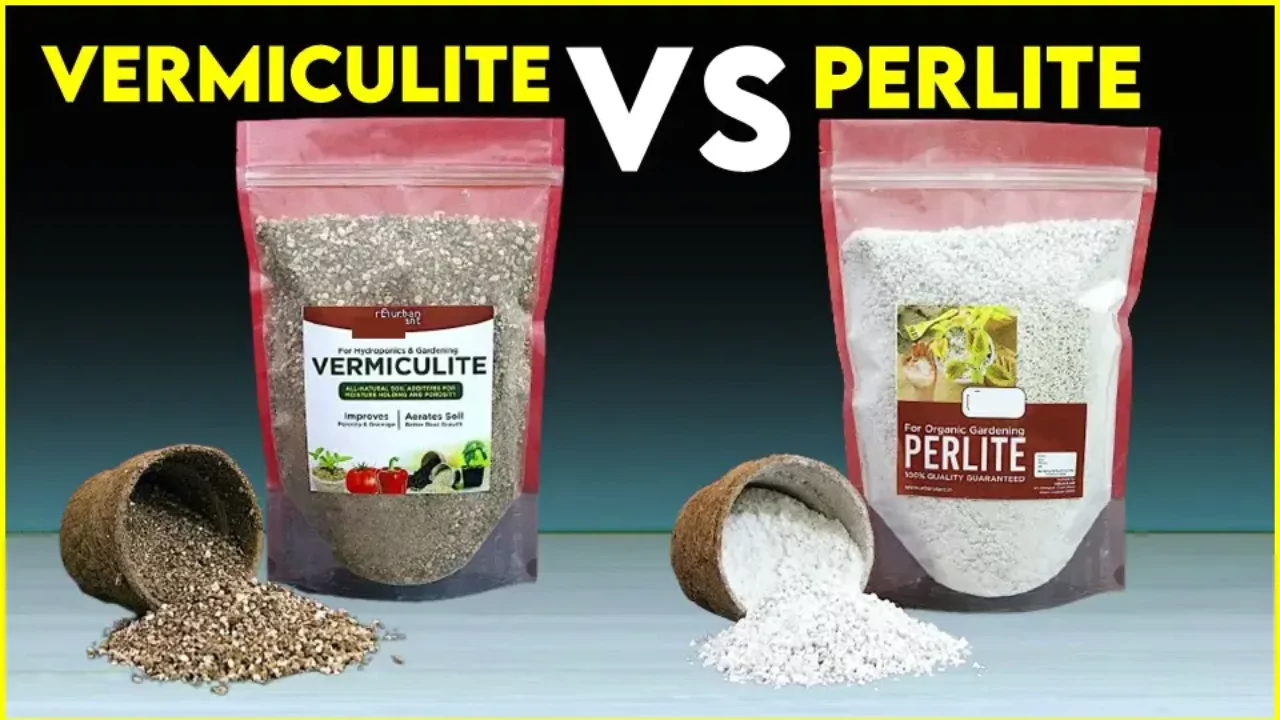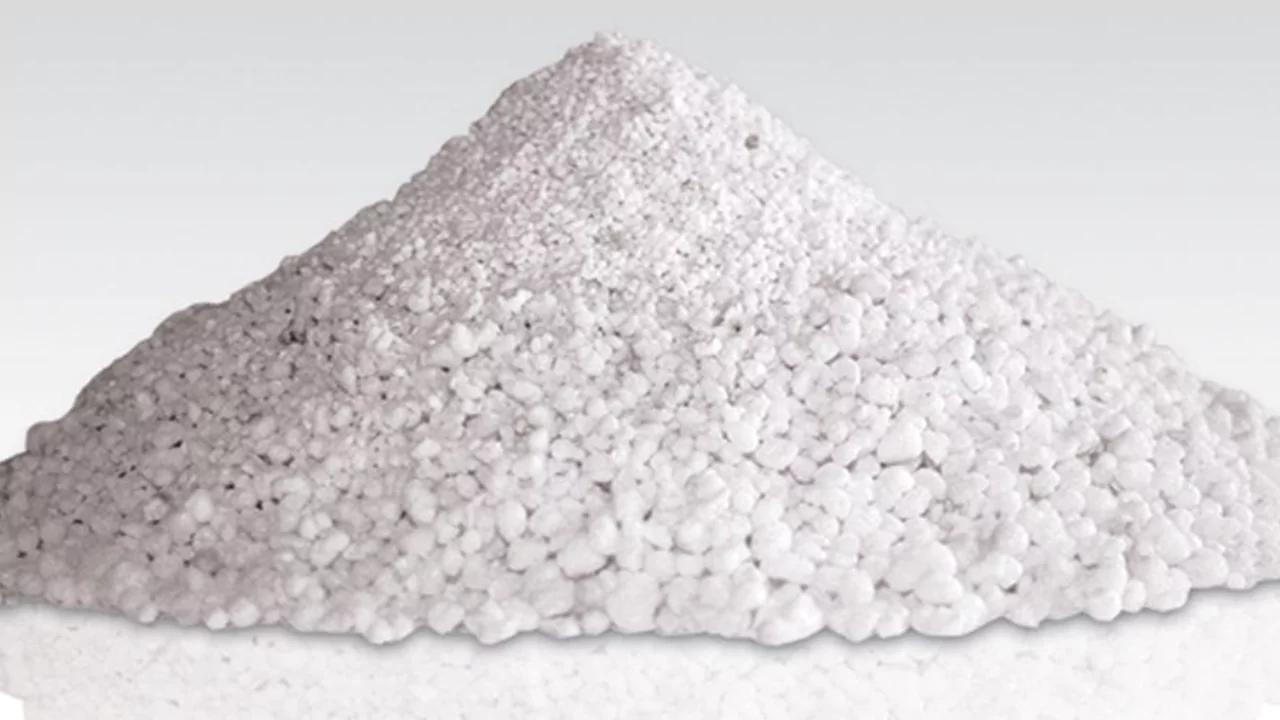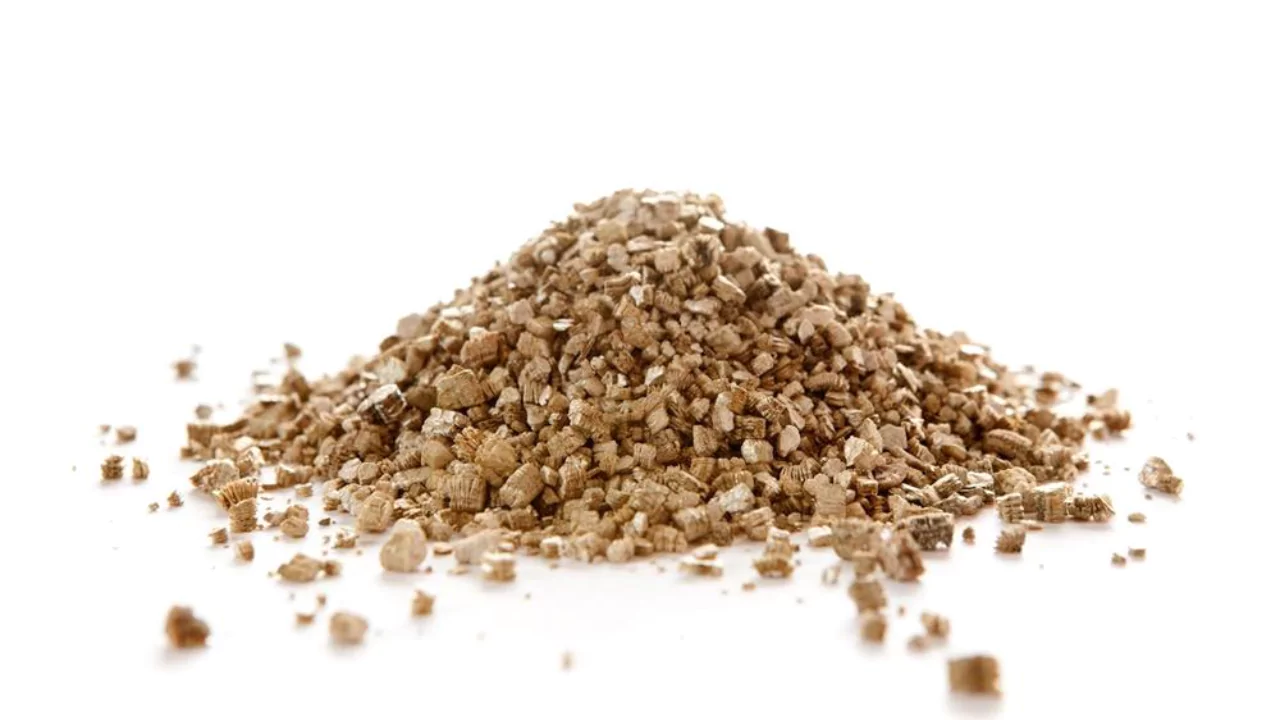If as you’re trying to identify which soil supplement will perform most optimally, you wonder what the difference between perlite and vermiculite is, then this piece is for you.
Both additives are comparable and are very popular, but they have very different characteristics that are significant.
Learn more about the distinctive features of these two-perlite and vermiculite-which gardeners use to alter the moisture and nutrient retention capacity of garden soil.

What Is Perlite?
Perlite is produced from volcanic rock that is heated and crushed into small pieces, or rather, transforms into small white pieces.
Advantages of perlite includes mid way in water holding capacity while it ranks low in retaining nutrients. Furthermore, it aids in the drainage of planting blend by being added.
Perlite aids in protecting and insulating a plant’s roots from extreme temperature changes. It is also used on the seed coat as a protective layer. Characteristically, perlite is light, clean, has no odor, and is easy to handle. Its pH has ranges of 6.6 to 7.5.
Adding perlite to the soil helps cacti and succulent plants which need a drier soil during the resting phase between growth and watering.
- Perlite is great for seed starting mixes and blending your own custom potting soil mix
- Helps combat soil compaction by lightening and loosening heavy, compacted soils
- White granular pieces that contain about 6 percent water
- Perlite has a neutral pH level
- Holds nutrients and three to four times its weight in water
- Clean, sterile, odorless, and non-toxic
- Works as a lightweight sand substitute
- Won’t rot or mold
- Tends to float to the top of potted plant containers due to its light weight

What Is Vermiculite?
Vermiculite, an all-natural mineral product, is magnesium-aluminum-iron silicate. It is mined and then processed into a soil additive to increase soil’s water and nutrient retention.
It looks like mica with its water trapping layer, It has high water retention and high nutrient retention levels. Vermiculites water holding capability makes it perfect as an anti-caking agent in dry pesticides and fertilizers.
Vermiculite does not contain or is a type of asbestos. The rumor stems from some vermiculite mixed with asbestos from a mine in Libby, Montana, which closed in 1990 due to the contamination.
Other sources of vermiculite have been tested to be asbestos free and pose no harm. The medium is considered safe for commercial and personal use.
Vermiculite is most useful to store in a growing medium for water-loving plants that require the soil to be moist at all times. For water loving plants, add a healthy scoop of vermiculite to the potting soil.
- Great for seed starting or blending your own custom potting soil mix
- Helps to lighten and loosen heavy, compacted soil types
- Helps soil retain moisture and gives plants nutrients
- Mixes easily and well with soil
- Clean, sterile, non-toxic, and odorless

Vermiculite and Square Foot Gardening
Mel Bartholomew, author of Square Foot Gardening describes vermiculite this way “As you probably know it holds water yet drains when it’s filled, just like a sponge does.The roots of the plant grow around the particles and virtually take up all the water they want. And because the particles of vermiculite are so slow to dry, moisture can be preserved, helping to enhance the plant’s growth for veritable health.”
It is one of the three combined ingredients in his recommended soil recipe for the popular Square Foot Gardening method. The complete soil recipe consists of one third vermiculite, one third compost and one third peat moss.
From my dealings with Mel, he stands as a rigid supporter of vermiculite and believes, for some reason, that it surpasses perlite. To put it in his words, “the most marvelous natural material.” It baffles me how he ignores the cheaper perlite and willingly pays more for his coarse branded vermiculite.
Common Traits of Perlite and Vermiculite
Both of these materials are substitutes for sand in potting mixes and are used to enhance the aeration and texture in exclusively gardening soils and other soilless mixes – hence they both fall under the category of lightweight fillers.
Both share similar mechanical properties as they are fragrant free, sterile, and devoid of any form of pest or plant material. Moreover, neither medium of choice would rot, compromise, or disintegrate over time.
Both mediums are incorporated in potting mixes prepared for plant nurturing and seed germination, aiding in hydroponics, along with merchandising containerized and transplanted plants.
Additionally, both find common use as vegetable fillers in dry forms of fertilizer, pesticide, and herbicide in an attempt to enhance surface coverage.
Differences Between Perlite and Vermiculite
Both perlite and vermiculite serve the same purpose for the garden including the aid in moisture retention, prevention of compacted soil, and improvement of drainage.
They serve the same purpose in the cultivation and indoor or outdoor gardening as well as in the propagation of new plants and seed starting.
The differences of how much water the each medium can retain as well as how water is retained, makes them suitable for different applications.
Vermiculite will work better for water-loving plants such as some irises or even forget-me-nots. With water-drying perlite, it is far too fast for most water loving plants.
For cacti and succulents, the amount of water contained by vermiculite is far too much. Additionally, it may be harmful for rhododendrons which need well-draining soil. If these plants were to use vermiculite, it would potentially lead to death or root rot.
Common Questions and Answers About Perlite and Vermiculite
Are vermiculite and perlite the same?
Even though people tend to confuse them, together, perlite and vermiculite are not the same. Soft sponge-like silicate material, beige or brown in color, is vermiculite. White in color, harder, and made out of mined volcanic rock is perlite.
Vermiculite and perlite do have some things in common. Both materials are lightweight, inorganic, relatively sterile, and serve as soil amendments to improve soil aeration, with perlite providing greater aeration than vermiculite.
Both perlite and vermiculite have a high degree of porosity, allowing them to retain water in the soil for plant use, but vermiculite retains moisture even longer than perlite.
How do you determine which to use? If the growing plants require the soil to remain moist, vermiculite is preferred. It would also be the better option for gardeners whose plants are sensitive to soil alkalinity.
Vermiculite is preferred for starting seeds, because it helps prevent damping-off and other fungal infections that attack seedlings during their early growth stages.
Perlite does not retain moisture as well as vermiculite, but it does increase humidity when it is released. If high humidity is an issue for your garden, then perlite is the solution as many plants flourish in high humidity.
When rooting cuttings from existing plants, perlite is optimal since it eliminates moist rot which can become difficult otherwise.
For epiphytes, cacti, and other plants that need a lot of moisture, perlite is the best option since it drains and aerates easily, tolerating a higher pH level.
Can I mix perlite and vermiculite?
It is not practical to combine perlite and vermiculite as each one is suitable for different environments. If using aerated soil with a lot of air and drainage, use perlite for root cuttings, cacti, succulents, and epiphytes.
Plants that need extra humidity can also benefit from perlite. Consistent moisture needed for starting seeds is best served by vermiculite.
Can perlite be reused?
Yes, perlite can be reused after growing plants because it does not supper and does not disintegrate. Simply extract any remnants of plants, such as the roots, and perlite may be reused.
After that, thoroughly rinse the perlite. If you need to achieve a higher level of cleanliness, you can also sterilize it. Soaking perlite in a 10 percent bleach solution works well. Just remember to dilute it with water first. Let it soak for 20 minutes, and afterward, make sure to rinse thoroughly.
Can you grow plants in just perlite?
Most plants can be successfully cultivated using nothing but perlite as a growing medium. However, supplying water and nutrients through suitable fertilizers is essential.
Can you mix perlite with soil?
Probably the most popular method of using perlite is mixing it with soil in your outdoor garden beds or combining it with potting soil or another medium. Other experts suggest that when starting seeds, one should use a mix of half perlite and half peat.
This mix can be used for cuttings too, or you can replace the 50% perlite with 100%. With garden beds, start by spreading a two-inch layer of perlite, then incorporate it within the top six to twelve inches of soil. Potted plants also do well with a combination of a third perlite and the rest appropriate potting soil.
Does perlite decompose?
Because perlite is made of super-heated volcanic rock, it does not decompose over time. By adding perlite to soil, you are permanently changing its texture and making it better for growing plants.
Does vermiculite decompose?
Unlike other potting additives, Vermiculite does not break down or decompose while in use with potting soil, implying that vermiculite offers a permanent means to amend and improve your soil.
Does vermiculite help drainage?
Vermiculite retains moisture in soil, thus making it perpetually accessible for plants to use. Perlite, on the other hand, is better suited for those searching for a soil additive that provides adequate drainage and aeration.
How much perlite do I add to soil?
The amount of perlite you should include depends on what you want to grow. For seed starting, a 50-50 split with peat is ideal. For rooting cuttings, stick with this same mixture, or increase the perlite to 100%.
In terms of potted plants, perlite should constitute one-third and potting soil two-thirds. For garden beds, a two-inch layer of perlite should be mixed into the top six to twelve inches of your garden soil.
Is perlite a Styrofoam?
Perlite may have a resemblance to Styrofoam, but it is not Styrofoam. Perlite is actually a volcanic rock formed through heating, crushing and altering color and texture.
Is perlite good for clay soil?
Perlite is a wonderful clay soil amendment if your intention is to improve the drainage or aeration of the soil. Work your clay soil around 6-12 inches deep and then add a 4-inch perlite layer on top of the soil.
Then, mix the perlite with the soil that you have already loosened. In case your clay soil requires some organic materials, consider using a blend of half perlite and half peat for this step.
Is perlite good for succulents?
Considering its drainage and air circulation properties, perlite actively improves soil texture when growing succulents. Mix 1 part potting soil, which should not contain vermiculite, 1 part coarse sand, and 1 part perlite.
Is perlite safe for organic gardening?
Perlite may be considered organic since it is a naturally occurring mineral that can be superheated and crushed. However, to ensure its organic nature, check for labeling that confirms its organic status.
Is vermiculite organic?
Vermiculite happens to be a naturally occurring mineral that is mined, heated, then packaged for gardeners, but at times it can be organic. Ensure it is labeled “organic” in order to confirm its organic nature.
Is vermiculite safe for gardening?
Vermiculite is classified as a naturally occurring mineral with suitable attributes for use and as such, it’s safe to say it is safe use. The contrary rumors that you may have heard stem from a now-defunct mine that produced asbestos-laced vermiculite. As a note, the vermiculite available on the market does not contain asbestos.
Should I add vermiculite to my soil?
You may add vermiculite for soil when creating a seed starting mixture or when the plants you are nurturing require water retention in the soil.
It is noted that when working with fungus susceptible plants, vermiculite is the ideal choice.
What does vermiculite do in potting soil?
Vermiculite improves the soil’s water retention capability, allowing it to better retain moisture and remain moist for longer periods. It helps the potting soil to retain nutrients and keeps them in an absorbable state for the plant’s use.
What is perlite good for?
Perlite is an expert when it comes to soil aeration and fast drainage, making it useful for rot-prone plants.
Perlite aids in soil drainage, which increases humidity levels, essential for other plants to thrive. Additionally, it is ideal for plant propagation, particularly for cacti, succulents, and epiphytes.
What is perlite made from?
Perlite consists of volcanic glass (obsidian) that is super-heated, turning it into “white” foam.
The water trapped inside the volcanic glass undergoes a superheated and crushed process, resulting in a white, popcorn foamy consistency.
What is the purpose of perlite in potting soil?
Perlite is incorporated into potting soil on a regular basis because of its ability to enhance soil drainage, allow air circulation, and break up compacted soil for better permeability. More importantly, it is very light, making it easier to transport the soil.
What is vermiculite used for in gardening?
Vermiculite loosens compacted soil, improving its drainage as well as its nutrient and moisture retention capabilities, which in turn, makes the nutrients more readily accessible for your plants.
What is vermiculite used for in plants?
When employed as a soil amendment for plants and if the plants do not retain moisture for extended periods of time, the soil will eventually dry out.